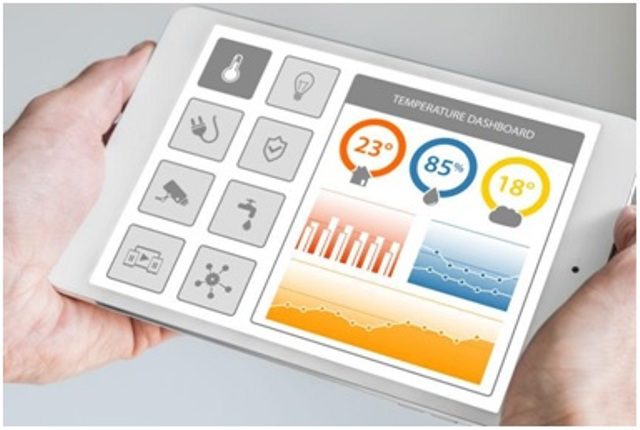
Wireless sensor technology is transforming our world in many ways.
By automating information flow between remotely located sensors, organizations can gather more data and unlock new operational efficiencies. Wireless temperature sensors, in particular, are already being used across many industries to help track environmental conditions in real-time.
Wireless temperature sensors enable businesses to monitor temperature and humidity levels across vast geographic areas. Consequently, network developers can deploy next-gen Internet of Things (IoT) applications that create positive and lasting impact.
For example, network developers can configure sensors to detect changes above or below certain thresholds and prevent issues that may arise from drastic temperature fluctuations. Researchers can monitor certain areas for scientific purposes, or businesses can ensure that safe working conditions exist for their employees. Temperature sensors from leading manufacturers like Temp-Pro are also being used to identify equipment malfunctions and ensure that certain assets are safely preserved.
The possibilities are endless when it comes to deploying wireless temperature sensors for IoT purposes. Here, we provide an overview of different types of wireless temperature sensors and highlight real-world examples of how organizations are taking advantage of the technology.
What are the different types of wireless temperature sensors?
There are various types of wireless temperature sensors that differ slightly in design and functionality.
Some sensors measure temperature levels by evaluating airflow. Others use external probes to assess local conditions. IP67 temperature sensors are built to withstand harsh weather conditions or industrial settings with large amounts of dust or debris.
There are also wireless thermocouple temperature sensors, which rely on electrical signals to detect temperature changes. These sensors can be configured to transmit temperature readings on preset schedules or when certain thresholds are exceeded. Some wireless thermocouple sensors also support downlink messaging and can integrate with a variety of probes.
Many industrial, research, and manufacturing organizations use base metal thermocouples with wireless sensors that can withstand extreme temperatures. Type K thermocouples are often used in boiler rooms and engines due to their endurance at high temperatures. For colder applications, such as those involving cryogenic chambers or ultra-low freezers, Type T thermocouples are especially useful. Wireless sensors with noble metal thermocouples are durable under the most extreme conditions.
Between all of these wireless temperature sensor types, organizations have many options when it comes to designing and deploying IoT applications for our world today.
Using wireless temperature sensors to facilitate safe working environments
Wireless temperature sensors have significant potential when it comes to helping organizations create safe working environments for employees.
For example, companies with warehouse operations can rely on wireless sensors to notify facility managers when temperatures are too hot for roles involving substantial physical activity. With automated temperature alerts, warehouse leads can plan additional breaks throughout the day and ensure that employees are staying hydrated.
In areas that are prone to freezing temperatures, wireless sensors can augment fire suppression systems and help utility managers prevent pipes from bursting in the winter. Wireless sensors can be installed throughout buildings near critical systems to measure humidity levels and help personnel stay on top of crucial maintenance responsibilities.
Wireless temperature sensors can also be used by police departments to ensure the safety of their K-9 units. On warmer days, these sensors can alert officers when their canine partners are overheating or overworking. Zookeepers can also use wireless sensors to monitor all unique habitats for the animals under their care.
Using wireless temperature sensors to protect valuable assets
Temperature sensors may also help protect valuable assets that would otherwise require manual monitoring.
Art galleries and museums both require carefully curated environmental conditions to ensure that all pieces are preserved appropriately. Humidity and temperature levels need to be held constant in narrow ranges to avoid any long-term damage to exposed artwork or artifacts. It can be challenging to maintain environmental conditions that are both comfortable for guests and necessary for preservation purposes.
Greenhouses are another setting in which temperature sensors can be effective. With wireless sensors, nursery workers can monitor temperatures in many areas simultaneously and create ideal growing environments for every species under their care.
Data centers and server rooms must also be monitored closely due to how much processing takes place in those settings. Wireless temperature sensors can be installed near hardware that is prone to overheat and help prevent damage to critical systems.
Using wireless sensors for bolster cold chain monitoring
Cold chain monitoring processes will also benefit from wireless sensor technology. Grocers can require that distributors install temperature sensors in their vehicles to ensure that food is kept cool before it reaches its destination. Grocery chains can also use temperature sensors onsite to monitor refrigeration systems and alert when temperatures rise beyond safe levels.
In the medical field, organ transportation services can use wireless temperature sensors as an extra precaution to ensure that organs are preserved while in transit. Institutions can follow a similar approach for maintaining healthy cadavers for research or investigation.
Optimizing the IoT through wireless temperature sensors
These are just a few examples of how wireless temperature sensors will transform various sectors and processes forever. As IoT technology continues to improve, expect to see new temperature sensor types and applications arise that drastically improve operational efficiencies and in many cases, people’s lives.
